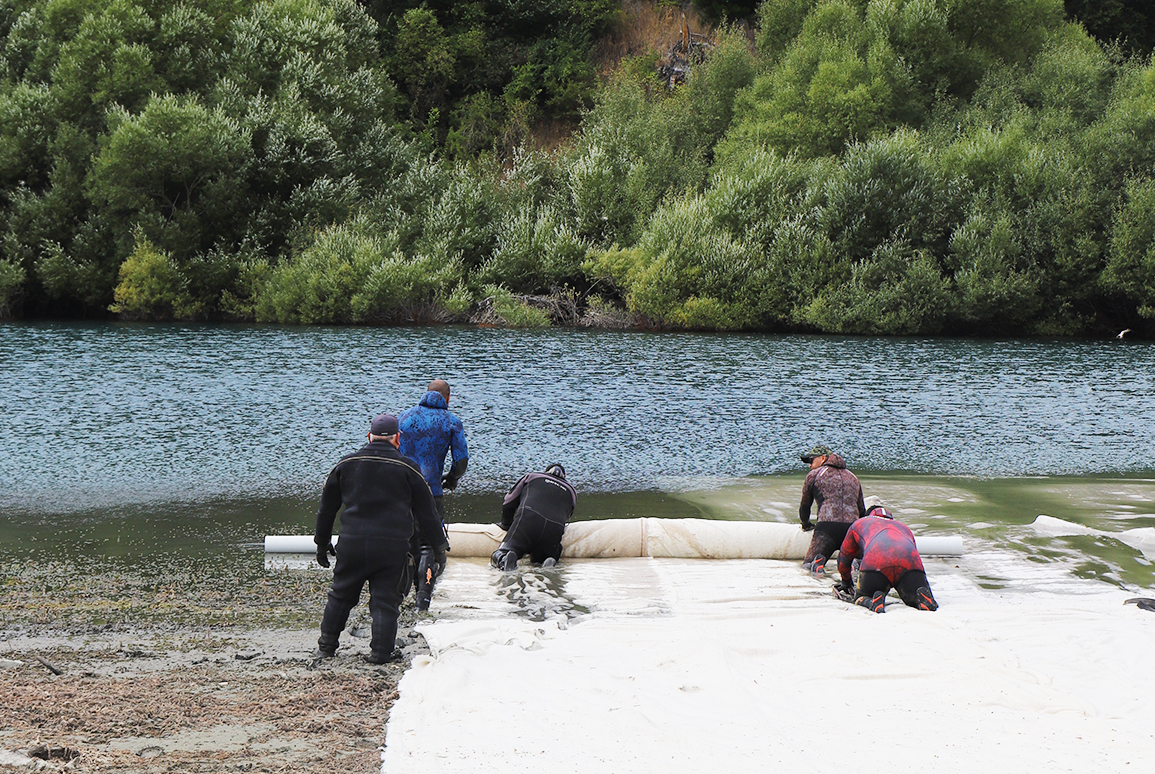Benthic Barriers: the missing tool for aquatic weed eradication
9 October 2025
Written by Jourdan Lethbridge
Aquatic weeds such as Lagarosiphon major continue to present a serious biosecurity challenge across Aotearoa New Zealand.
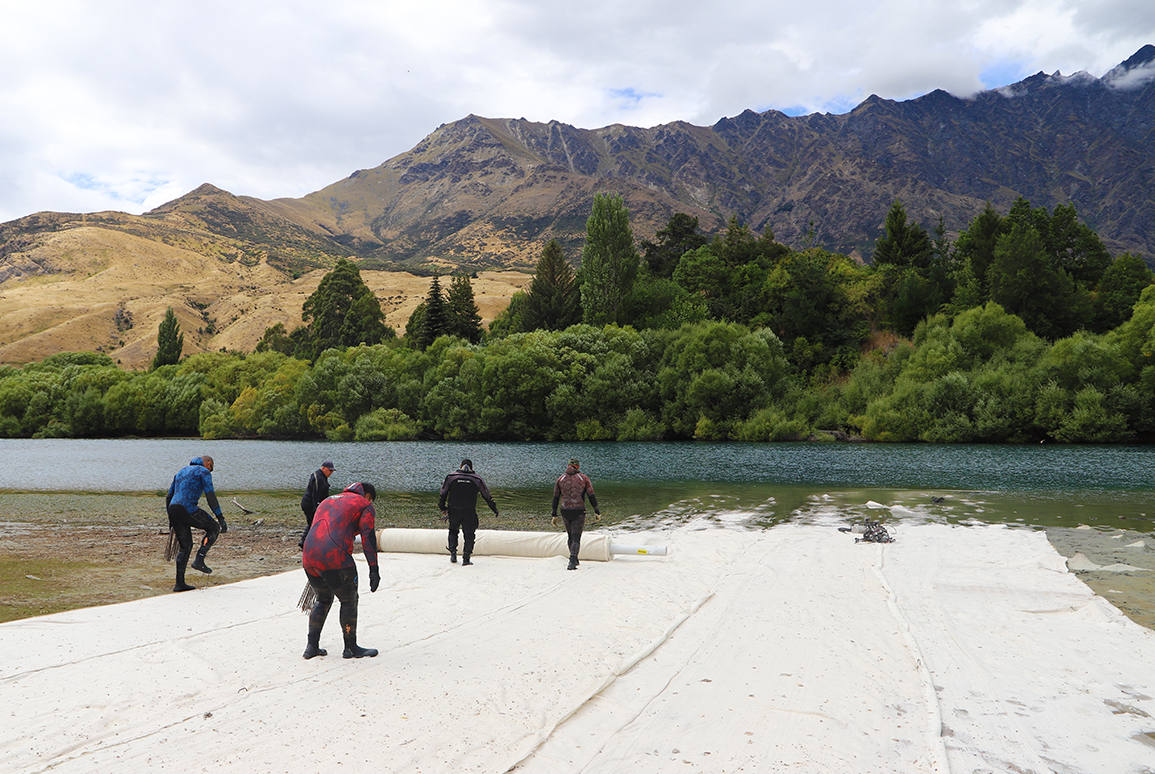
First introduced from Africa in the 1950s, lagarosiphon is a fast-growing invasive plant capable of displacing native plant communities, reducing biodiversity, and interfering with hydroelectric generation and recreation. Lagarosiphon spreads into new waterbodies through fragmentation; often moving on boats, trailers, and fishing gear.
Traditional tools within the biosecurity “toolbox” have been hand-weeding, diver hand-cutting, suction dredging, and herbicide application using both aerial and boat methods. Each of these has a role, but none of these alone provides a scalable, cost-effective eradication option. This gap led to increasing interest in benthic barriers as a potential game-changer for the eradication of lagarosiphon.
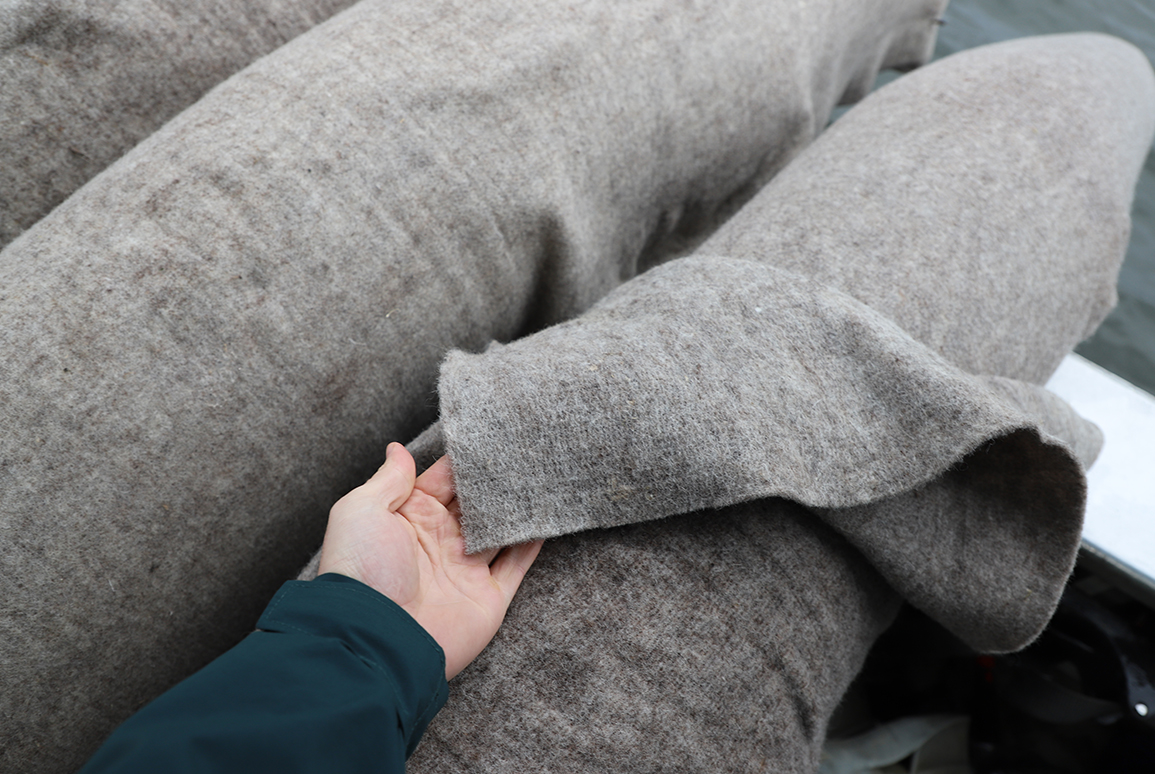
Benthic Barriers: From Concept to Application
Benthic barriers are geotextile fabric matting commonly made from hessian, jute, or coconut fibre laid over weed beds by divers. Once the barriers are laid, the plants are deprived of light and die off within three to nine months. Sediment naturally accumulates on top of the matting, further suppressing the ability of the plants to photosynthesise.
Early research demonstrated that hessian was fit for purpose in New Zealand’s freshwater systems. Since then, LINZ have laid more than 65 hectares of hessian matting in Lake Wānaka and the Kawarau River, with contractors refining techniques improving efficiency. Divers can lay up to 3,750 m² of matting per day under ideal conditions.
These successes have established hessian matting as an eradication tool. But hessian has limitations. Grown and manufactured overseas, supply chains are vulnerable to shipping delays and quality issues, while bulk purchasing requires significant storage. Hessian also degrades in sunlight and underperforms in high-energy river environments.
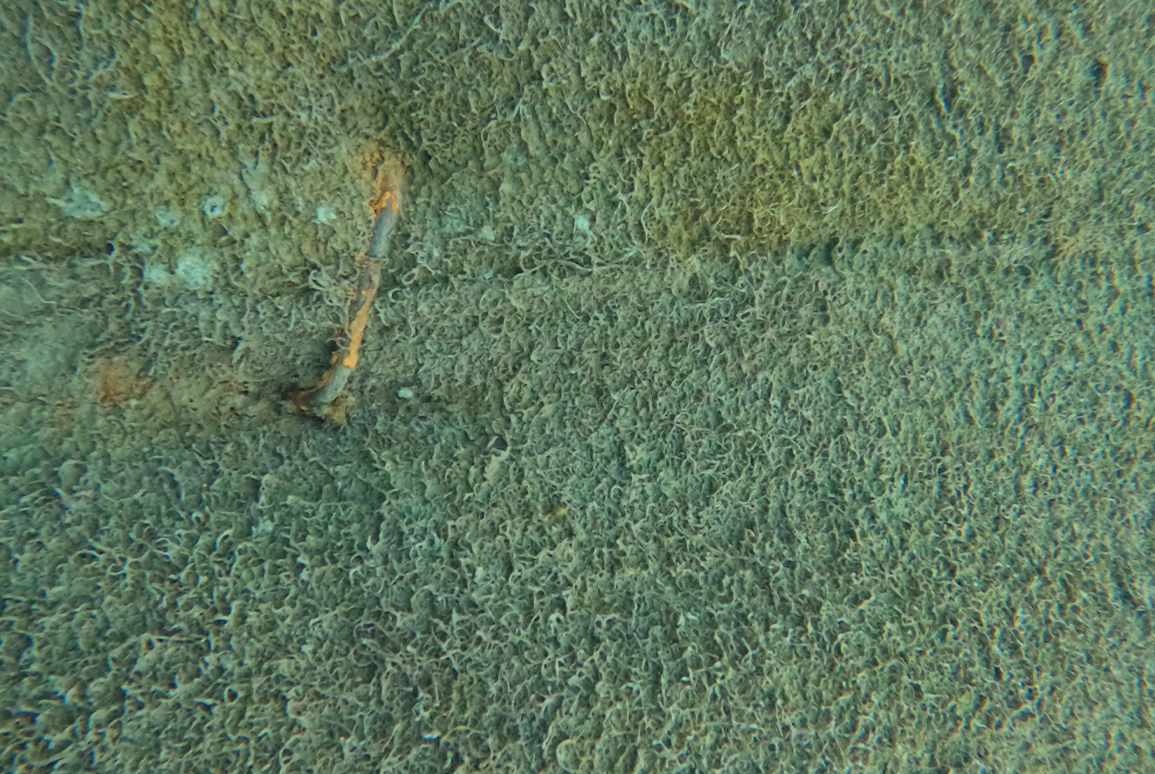
A Locally Sourced Alternative
Innovative wool-based products could address these challenges. Manufactured in Christchurch from Banks Peninsula wool, these wool mats offer several advantages:
- Local supply chains: Reducing shipping risks and greater quality assurance.
- Durability: Field trials have shown wool mats become stronger in water, resist degradation, and can self-anchor.
- Ecological performance: Earth Sciences New Zealand (ESNZ), previously known as National Institute of Water and Atmospheric Research (NIWA), undertook assessments that found no increase in nutrient levels and noted that wool mats supported native plant regrowth.
In Lake Wānaka, side-by-side comparisons of wool and hessian mats showed that wool exceeded expectations. The wool fibres became stronger when submerged, and seemed to trap a substantial amount of sediment, speeding up the process of blocking sunlight. Trials on the Kawarau River have proven successful in a riverine environment; and further testing of wool/hessian blends alongside pure wool mats of varying densities is currently underway.
While wool mats are bulkier, and can be more challenging to install, their resilience and ecological benefits make them a strong candidate to replace hessian in many contexts.
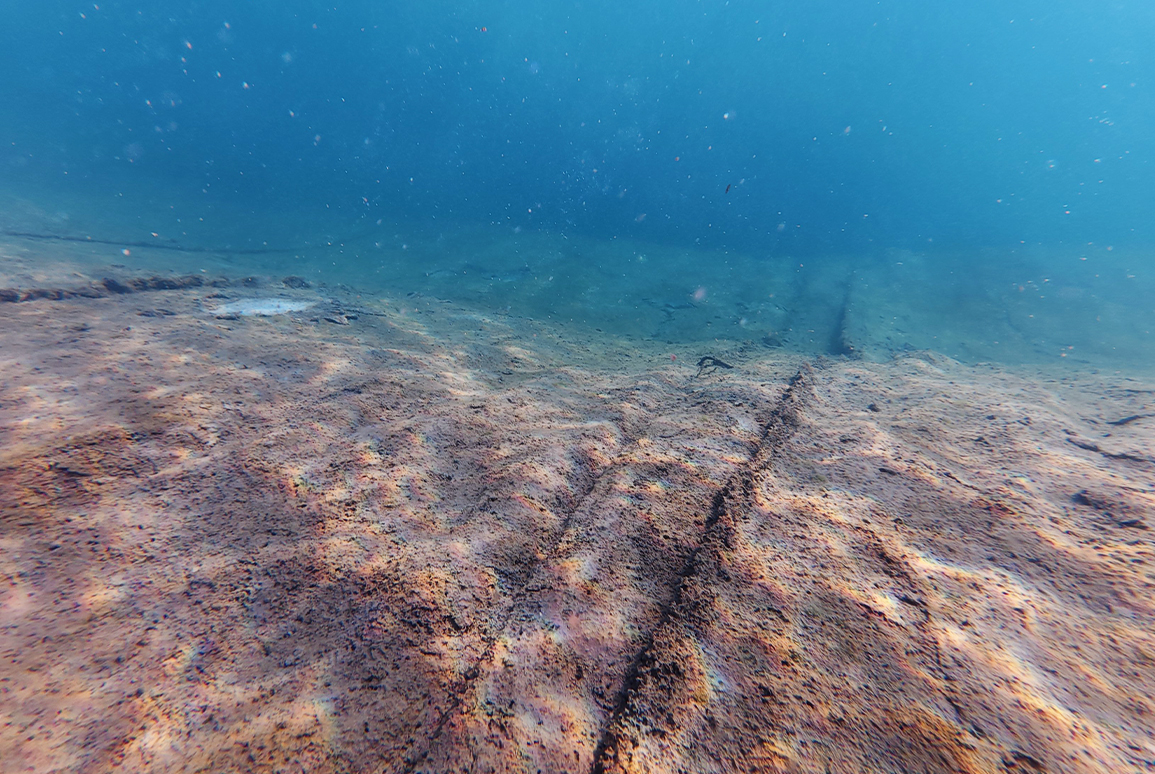
Implications for Biosecurity Management
The development of wool-based benthic barriers represents a significant step forward for lagarosiphon control. Key implications include:
- Eradication potential: with a proven, scalable, and durable method, benthic barriers can close the gap in achieving eradication at priority sites.
- Sustainability: Sourcing from local materials reduces carbon footprint and supports local farmers.
- Operational lessons: Continued contractor innovation, largely through developing more efficient deployment methods, ensures benthic barriers remain practical in both lakes and rivers.
Aquatic weeds like lagarosiphon will remain a persistent challenge for Aotearoa. However wool-based mats, offer a credible pathway towards eradication at scale. The science is robust, the operational trials promising, and the opportunities for local innovation continue to grow.
If we can integrate these tools into long-term management strategies, ensure that funding and policy frameworks keep pace, and continue to trial new approaches in varied environments, we can safeguard freshwater ecosystems, uphold the values of mana whenua, and protect the economic and recreational benefits that lakes and rivers provide to communities.
